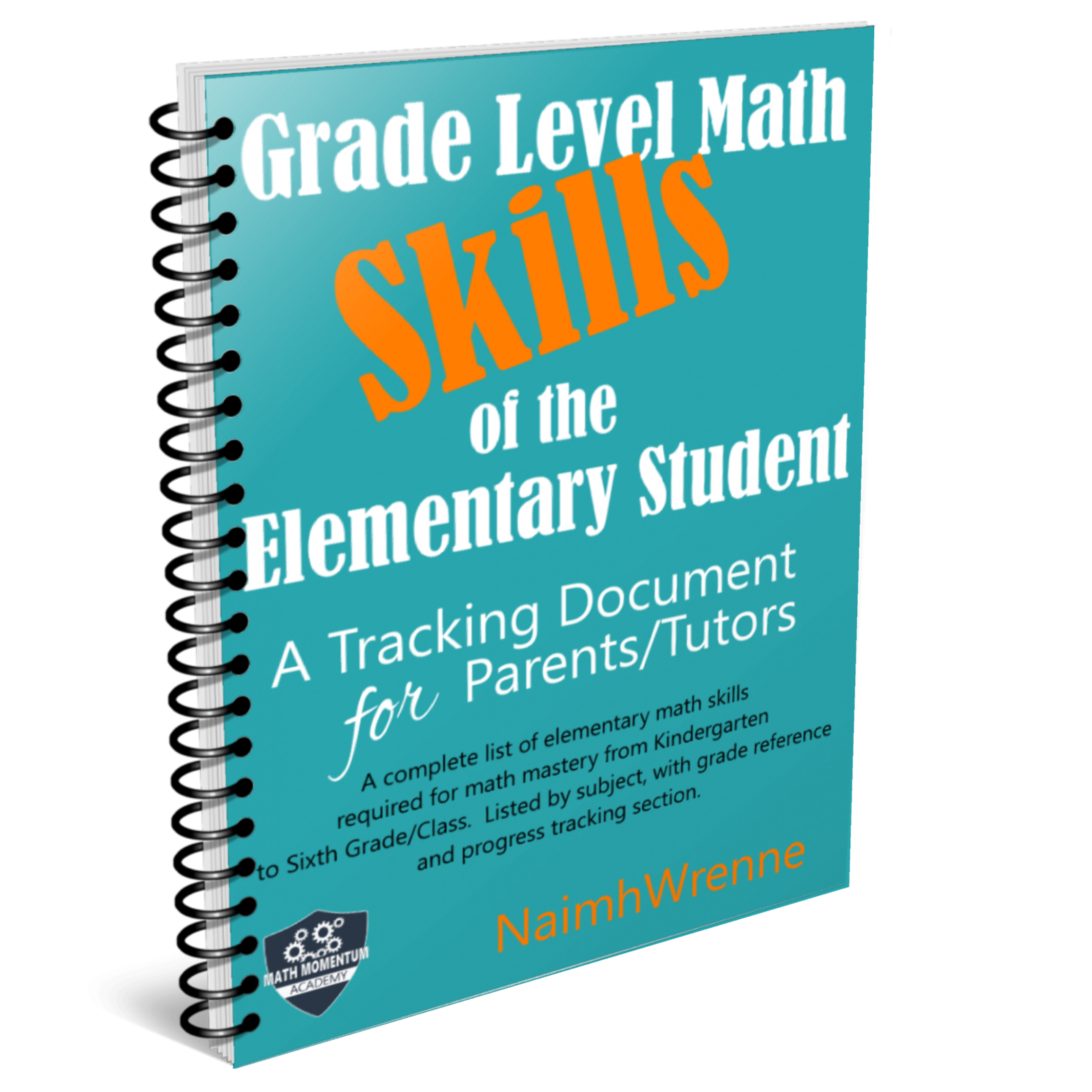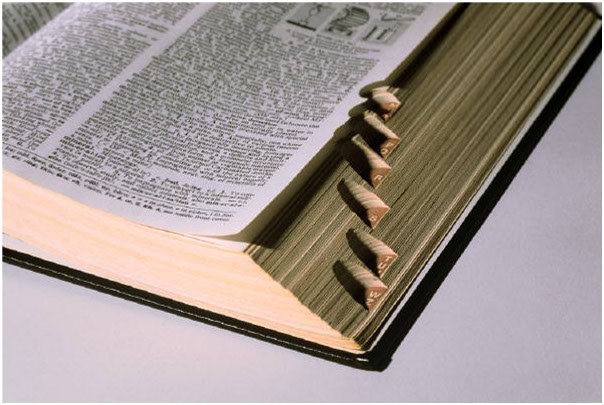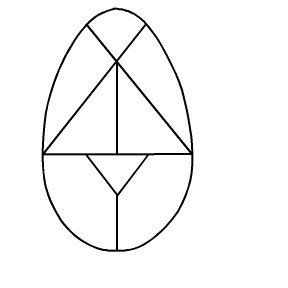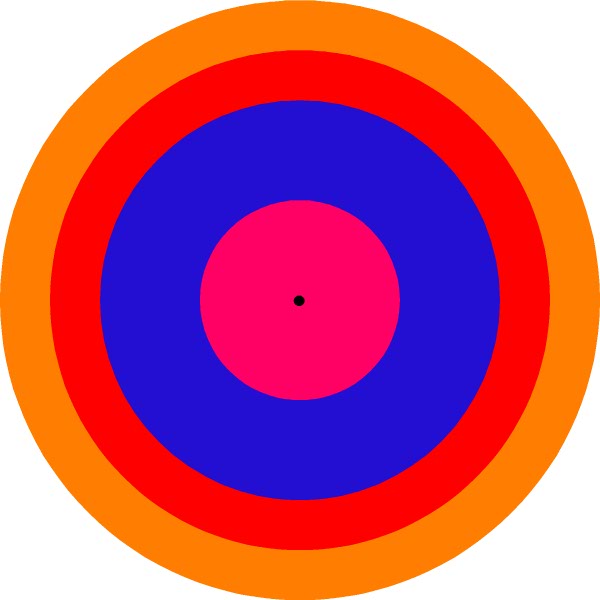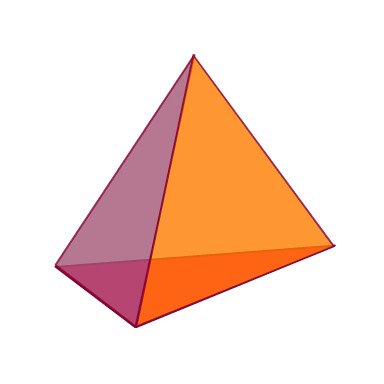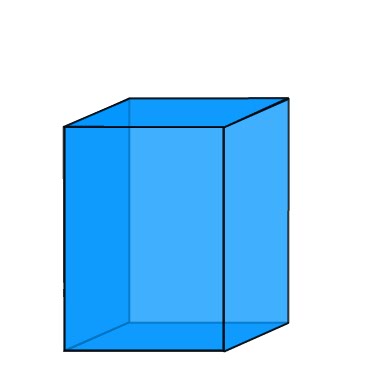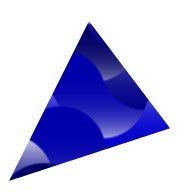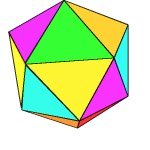Master the Trapezoid
from recognition to construction.
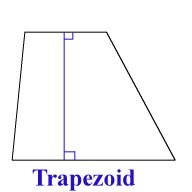
The Trapezoid can sometimes cause quite a bit of confusion. Personally I think it is more a language problem than anything else.
The Trapezoid (as shown in the diagram above, with two parallel lines is also referred to as a Trapezium in British English, but the Trapezium in American English has NO Parallel lines - So on this site I am going to stick with the American Standard.
7 Stages to master any shape
The seven steps detailed bellow take you from basic identification all the way through to taking a detailed look at the theorems involving the trapezoid.
These steps also include 'pit stops' to complete fun geometry projects and coloring sheets. These are nice 'breathers' on the learning curve, but they are excellent ways of reinforcing the new knowledge in ways that your kid can get a real life, hands on approach to understanding the basic geometry concepts included.
Okay, so let's get started ...
Stage 1 - Identify
How do we know what we look at is a Trapezoid?
First and fore most a Trapezoid is a quadrilateral which is a 4 sided plane shape.
- It has 4 lines
- It is a closed shape
- Two of the lines are parallel
- It is a simple quadrilateral - meaning the sum of it's angles is 360 degrees.
- A Trapezoid is a Trapezoid and cannot be named anything else. For example a square is a rectangle, but a rectangle is not a square!
Once your child is comfortable with how to recognize the trapezoid, offer them some shape worksheets to see how they get on with identifying the shape when compared with others.
You may also find our Quadrilateral Family Tree Printable a useful tool to offer your child.
Calculate Area and Perimeter
Please note this is NOT a formula your K-6 grade student is required to know.
Area

The Area of the trapezoid is calculated by first getting the AVERAGE length of the two sides that are parallel.
Then you multiply this average by the height of the Trapezoid. If your child has problems understanding the concept of Area, I recomend working with second grade 'grid method' worksheets first, and then move on to fourth grade worksheets using numbers and finally word problems.
Permieter

The Perimeter of ANY shape is simply the sum total of all the lengths of the shape - and a trapezoid is no different.
The perimeter of a trapezoid is the sum of its length.
How to construct a Trapezoid
To complete this, you will need a ruler, pencil, compass, and a blank piece of paper!
Note: This construction is based upon having the knowledge of the height of the trapezoid along with the length of the four sides.
Step 1: Draw a straight line lightly using your ruler and pencil on your paper. - This is what we call a construction line, and will be the base of your trapezoid.
Step 2: Indicate the two end points of the base of your shape with two points, measured by your ruler.
Note: We know that the top and base line of your trapezoid are parallel, and, we know the distance between them (the height of your shape)
Step 3: Using your compass, construct two lines (lightly) perpendicular to your base. On both of these lines measure the height of your trapezoid, and indicate with two points (one on each perpendicular). Connect these two points using a light construction line. The second side of your trapezoid will be 'somewhere' on this line.
Step 4: Using your ruler, measure the length of your third and fourth sides between these two parallel lines, using the points on your first construction line, as one end of the line segment. Mark with a point.
Note: You will now have four construction lines, intersecting at four vertices.
Step 5: Your trapezoid is the shape contained between the four points of intersection of these four lines.
Step 6: Using a heavier line connect the four points to finish your shape.

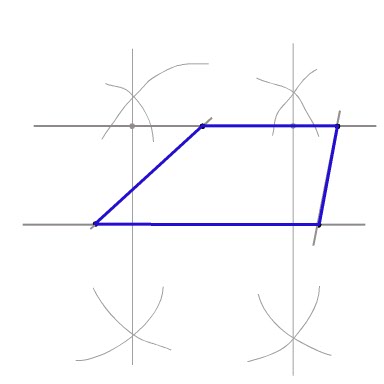
Relationship to 3D-Shapes
There are no 3d Figures an elementary student will have to stude in relation to the trapezoid. HAVING SAID THIS, it is a good idea for you as a parent/tutor to have your child draw or deconstruct 3d-shapes from a trapezoid that they do have to deal with, such as the Cuboid and the triangular prism.
Fine tuning this skill will be of endless benefit to them in their geometry studies at a later time in their academic careers.
Bellow is a diagram of a trapezoidal prism, deconstructed into two triangular prisms and a Cuboid.

Geometric Coloring
The use of coloring sheets allows your child to start experimenting with different shapes. A great first step is to encourage your child to color in shapes adjacent to each other with the same color, until their shape starts to look like 'something'.
Perhaps that something will be a rectangle or a house. By doing this, your child will start to realize the connection between the shapes.
You will find some nice free geometric coloring pages to download here.
Return from the trapezoid to our Polygon Section.or our Quadrilaterals Section.
I am sure you will find all the information and worksheets you need here, however if there is anything you cannot find please don't hesitate to contact me or simply visit the MathMomentumCommunity and join the conversation!
I love to hear from my readers, and with a little feedback and a few suggestions I can make this a great resource for parents, teachers and tutors alike.
Be sure to explore everything on this site starting at the home page.

